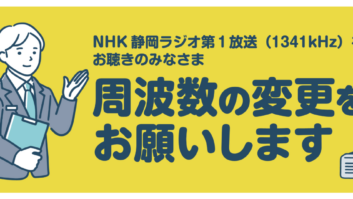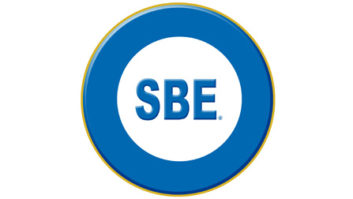What recent changes in the design and feature sets of transmitters are having the greatest impact in the manufacturing landscape? What key technical questions or concepts should a manager be thinking about in purchasing a transmitter?
For a recent Radio World ebook, I asked 11 leading engineers to comment on trends in transmission, a cornerstone topic for our readers.
The major trends
“Obviously, solid-state transmitters are the only way to go moving forward, given the ease of design, maintenance, size and efficiency,” said Jason Ornellas, regional director of technology at Bonneville International Corp.
“Manufacturers today are putting a lot into compact designs to decrease the footprint of a rig with the same performance, reliability and quality. You are seeing more systems combined for N+1 designs, with audio processing and STLs built in. Another big design in FM transmission is liquid-cooled transmitters, and in a good section of the United States it makes a lot of sense due to the climate to deploy these over traditional air-cooled.”
Said Shaun Dolan, partner at Inrush Broadcast Services: “The most crucial trend in broadcast transmitter technology can be summed up as ‘efficiency.’ This includes an emphasis on standardization across facilities, the ability to support elegant N+1 configurations for enhanced redundancy, the adoption of modular designs for quick and efficient repairs and the incorporation of common components between transmitters.
“These goals collectively contribute to improved operational efficiency for broadcasters.”
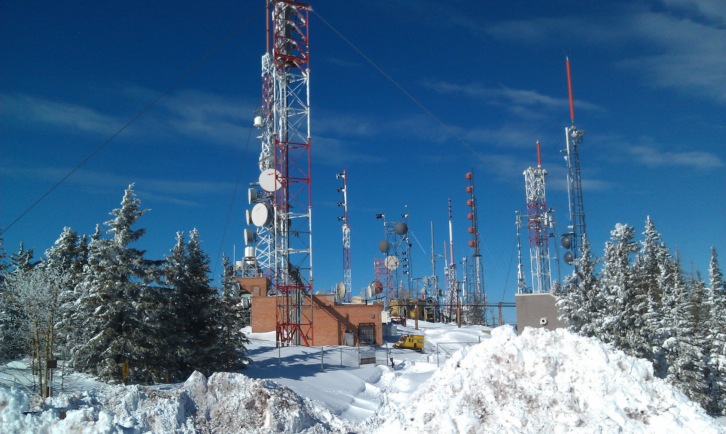
John Caracciolo, an engineer and the president/CEO of JVC Broadcasting, likes that he can now easily find a 10 kW FM transmitter that occupies only five rack spaces. He listed other notable developments like broadband, frequency agile designs; built-in RDS; AES, analog and composite program inputs with automatic failover switching; easy operation with different power voltage options; web-based remote control with automatic notification of faults and failures; and hot swappable RF power modules and voltage modules.
Robert Combs, director of engineering, corporate, at Cumulus Media, cites the role of Simple Network Management Protocol. “The ability to connect to your remote control through the network without a third device allows the engineer to not only save valuable rack space, it also allows for customizing what information you are collecting to fit your needs,” he said.
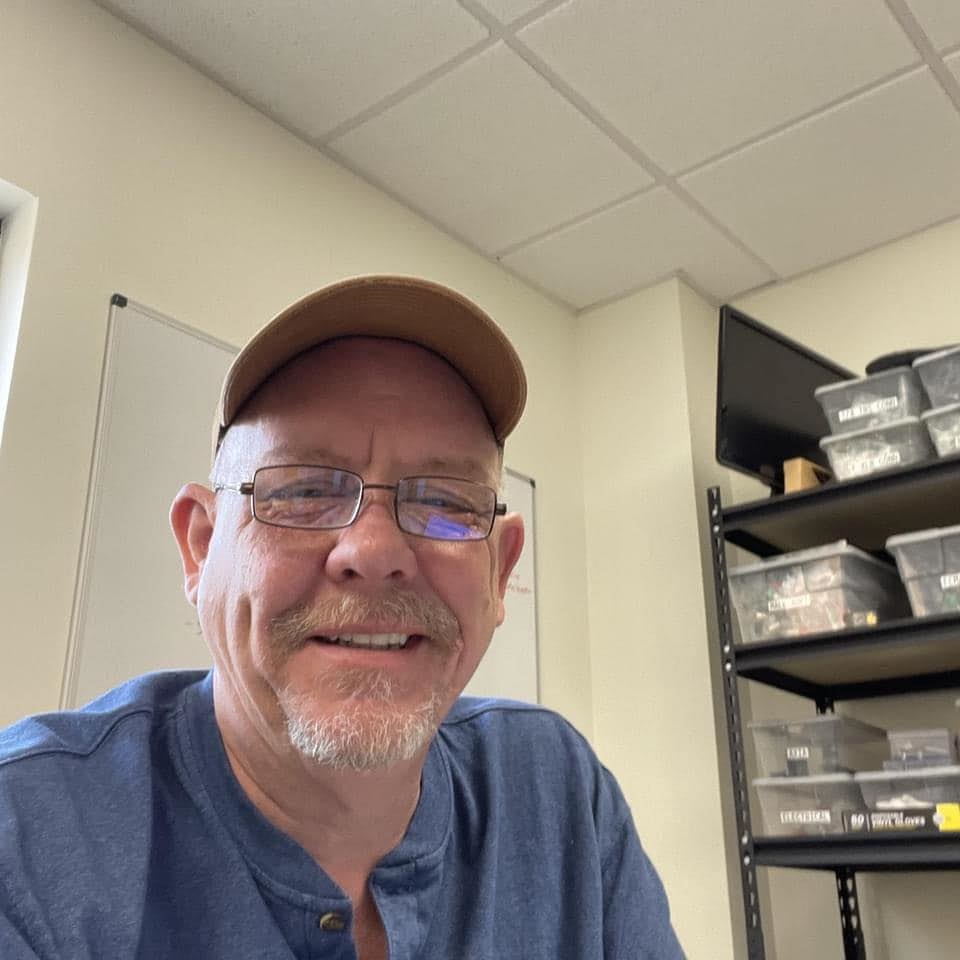
“The second would be integrating the STL into the transmitter/exciter, allowing for multiple paths to get audio rolled up in one card.”
William Harrison of classical station WETA(FM) in Washington, D.C., noted the importance of modularity.
“No transmitter is perfect, and it’s good to keep that in mind when choosing and installing one,” he said.
“You know there will be failures — power supplies, fans, PAs and exciters are all physical devices, designed and built by humans, and placed in a non-ideal environment with heat and possibly moisture, dirt, dust and even critters.”
When the inevitable failures occur, he says, you want to be confident that an issue in one section of the transmitter won’t take you off the air completely.
“In the past, we believed that redundancy meant having two of everything, transmitters included. But nowadays, with current budgets needing to stretch further, and more time between replacement cycles, modularity is more important than it ever was.”
A close second, he said, is that manufacturers are giving more thought what he termed “site bandwidth.”
“You see a couple of different models being explored: Encode everything at the studio and send a single data stream, or send a dedicated content stream for each signal you want to transmit, such as HD2, 3 and 4. It’s refreshing to see manufacturers discussing some of the benefits and drawbacks of both choices.”
Joe Geerling, the DOE at Covenant Network, said, “My start in tech was with McDonnell Douglas (now Boeing), and one of the first things I learned from the engineers there was to never use parts only available from a single source — a single factory, a single foreign country, etc. It was common sense, as one event like weather, political turmoil or a worldwide virus scare can cut off supplies completely. If I were a transmitter manufacturer and I met most of those criteria, I would make it a selling point today,” Geerling said.
“The trend that is most interesting is letting the transmitter absorb most or all of the info to be transmitted and let software in the exciter figure out the best way to create the carrier,” he continued.
“If we can make the best decisions in the last moment, perhaps the last nanoseconds, before all the modulation is set, we should get the maximum possible use of the channel and innovate for best sound, energy savings and so on.”
“Broadcast transmitters are getting smaller and more efficient every year,” said Paul Shulins, co-owner of Over the Air RF Consulting.
“It’s really remarkable the power levels that AM and FM transmitters are capable of handling for full-power licensed facilities and yet literally fit in a rack comfortably, where just a decade or two ago it would have filled a good portion of a room.”
But perhaps the most important feature in new machines, Shulins said, is safety.
“Using lower voltages and parallel amplifiers dramatically reduces the risk of injury to the maintenance engineer. Especially important these days when untrained staff are frequently required to work on this type of gear due to the recent trends in engineering staffing levels.”
Alex Hartman, partner in Optimized Media Group, tends to think with a longer view. He feels transmitter design has not evolved, in its essence, in the past decade or so.
“Water cooling, for instance, has been around for a long long time — more common in TV, but WLW was water-cooled too. Fundamentally, they’re all very similar, based on a reference design from the device manufacturer. The only thing any of them have done is make a decision about either bolting on features — software or add-on modules — or staying ‘just’ a transmitter and doing nothing else. Changing the way they’re packaged doesn’t make them any less (or more) prone to failure.”
It’s in the software
How will the development of software-integrated air chains change how engineers choose and deploy transmitters?
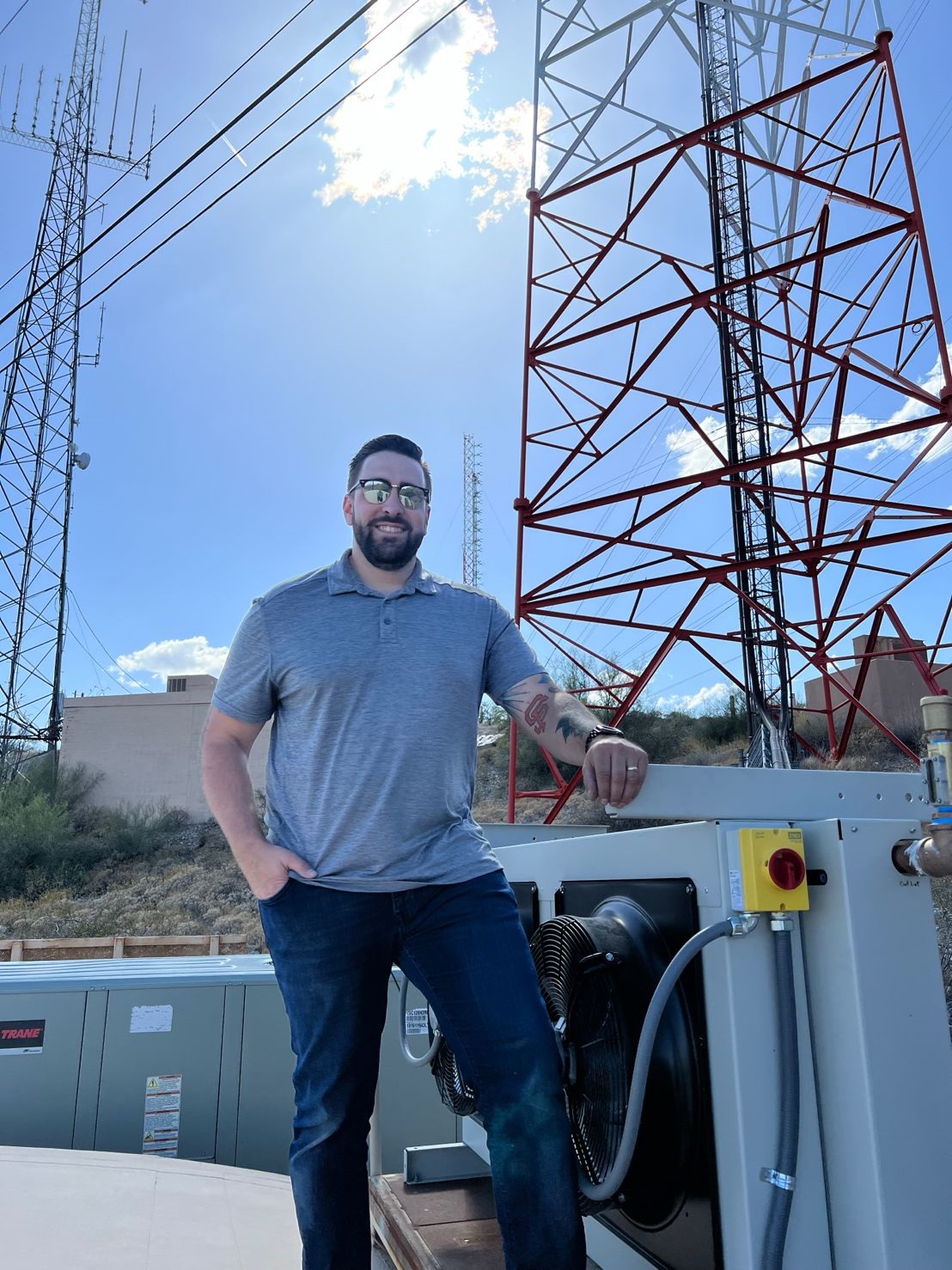
“I think it has already changed due to the equipment at the transmitter sites that have already gone to software,” said Jason Ornellas.
“We no longer need an RDS encoder. PPM gear and audio processing can be virtual instead of hardware. Software will continue to develop, and the hardware landscape will change. Having the transmitter GUI available on your phone through a VPN connection makes troubleshooting easier and more accessible when needed.”
William Harrison too said the trend is already well along.
“In the past there was a dedicated box of discrete components and DSP for each and every function: audio processing, watermarking, STL, EAS, overshoot limiting, etc.,” he said.
“Over time, many of these boxes have become essentially a computer with audio and GPIO hardware, but we still treat them like discrete, dedicated things and connect them together with XLR cables. However, there’s no real need to do that for many of these things now. A single computer can host the bulk of them, from processing to watermarking to STL transmission in many cases.
“That’s a tremendous savings in space, as well as dedicated audio hardware — even more when you take into account AoIP,” Harrison continued.
“It may only be a matter of time before manufacturers stop including interfaces by default for many things like multiple analog and AES audio inputs, subcarrier inputs, etc. Why bother when they can use an RJ45 connector and allow the customer to connect to the AES67 device of their choosing?”
Shaun Dolan of Inrush said the development of software-integrated air chains is revolutionizing product selection and deployment by transforming transmitters into dynamic, adaptable systems.
“This shift allows for the support of modern transport methods like μMPX and E2X+MPX, enabling equipment reduction and function consolidation for more flexible and advanced broadcasting solutions. We also expect that virtual airchains will become a managed service, which will allow broadcasters to offload encoding, processing, emergency alerting and metadata management to providers like Inrush.”
Integrated STLs in exciters will become a “must have,” said Robert Combs. “As we continue to lose our frequencies in the Great Spectrum Yard Sale, AoIP will be the only way to reach our sites. This will require the manufacturers to create ways to have redundant connections and allow for multiple sources.”
(Several of our ebook sponsors had more to say on the question of software-based air chains, which you can read here.)
SNMP
A common topic of discussion, mentioned above by Robert Combs, is the role of SNMP in today’s facilities.
“It plays a significant role in everything,” Jason Ornellas said. “We no longer have to wire for every status, meter or command. SNMP allows you to collect a wide variety of metrics from network devices, such as uptime, throughput, temperature, interface errors, CPU utilization and memory usage. With SNMP monitoring we can easily create a NOC for each market and company, due to the fact that almost every device at the site incorporates SNMP.”
Fidan Sen is the business and customer relations manager at the remarkable Camlica Tower in Turkey, where 100 liquid-cooled FM transmitters recently were installed on three different floors, and where infrastructure for DAB+ digital radio broadcasts is in place. This large stable of transmitters is monitored and tracked through an SNMP system.
“In locations with a high number of broadcasters and environments where transmitters are situated on separate floors, SNMP’s management advantage has led to personnel savings. It has made significant contributions to quick fault notifications for broadcasters and increased customer satisfaction. Additionally, centralized control and monitoring of various transmitters in remote locations elevate operational efficiency to higher levels.”
However I encountered plenty of qualifications on this topic.
Jim Stenberg suspects that the role of separate SNMP interfaces will decrease over time. “SNMP’s role is in the monitoring aspect of operations, but it seems that you could use the GUI full time and get similar results.”

Alex Hartman called SNMP “a 35-year-old protocol that should’ve been put to pasture 20 years ago … With the way the IoT world advanced in the past decade, we need to not latch onto IT department throwaways. It’s really all we have, though, so it is absolutely a must, either on the transmitter itself, or the remote control attached to the transmitter. The manufacturers should start looking at things like MQTT or Matter support, if not write their own APIs for the advanced enterprises.”
“When I wear my IT hat, I am cautious because of the security issues with SNMP as often implemented in broadcast gear I see,” Joe Geerling said.
“But the use of SNMP is hard to avoid because the benefits are so good. If an engineer has the time, they can do a lot with a little to monitor and report on conditions, using just SNMP and some open source software. Those who have some of the remote control systems built for broadcast can dig deep into a lot of gear they might normally ignore at the plant.
“My ‘happy thing’ using SNMP,” Geerling said, “is the reduction of the wiring to a critical box like a transmitter that has a good MIB file. Every reading monitored by SNMP removes the possibility of wiring and calibration errors. That is a big win. Add monitoring network switches, UPS units and other items that are already networked, and your single remote control system can do more thinking and filtering for you. (But I still want the AI bot that can get all my email and remote control info and just let me know when I need to intervene!)”
Cooling
Jim Stenberg, who cofounded OTA RF Consulting with Paul Shulins, brought up the issue of water vs. air cooling, mentioned earlier by Hartman.
“I think moving to water cooling is a huge benefit from an efficiency and reliability aspect. While on the one hand it seems that just having a single fan that exhausts air into the transmitter suite would seem to be the simplest approach possible, the reality is that you then need a relatively inefficient and less reliable air conditioning system to keep the suite cool and/or install an elaborate outside air exchanger,” Stenberg said.
“Transmitters with outside fan-forced heat exchangers reduce this to a single system, which can be made redundant, has excellent efficiency and is very reliable.”
Fidan Sen at Camlica Tower, with its 100 liquid-cooled transmitters, likes that work spaces can be placed near the transmitters thanks to the reduced noise, and adds that liquid-cooled transmitters don’t need the frequent maintenance that air-cooled units often do from exposure to environmental dust.
Karl Lahm, P.E., of Broadcast Transmission Services is former director of RF systems engineering for Univision.
“I’ve purchased and installed many liquid-cooled transmitters,” he said.
“It is the preferred method of cooling for higher-power installations and those at remote sites where HVAC repair could take many hours to begin. While the acquisition cost is higher than for air cooling in FM (though not in TV), the reduction in HVAC need and lowered susceptibility to HVAC failure bring lifetime cost to the vicinity, more or less, of air-cooled products. The warmer the outdoor temperature and the more remote the site location, the greater the need for a liquid cooled transmitter.”
Engineer Joe Geerling described a site where he added a 30 kVA UPS into a transmitter room, which pushed the heat load just over where one of the 10-ton units could handle by itself.
“A failure of one unit put the room into the 90s pretty quickly. I priced upgrading both 10-ton units to 15 tons, but the cost was so high it made buying a water-cooled transmitter a reasonable consideration. The water cooling system took plenty of heat out of the room and the 10-ton units remained. So we replaced a 25-year-old transmitter with a new solid-state, water-cooled unit and saved the cost and hassle of removing the ceiling-mounted air handlers and replacing all the plumbing and electrical to the units.”
The downside, Geerling said, was the liquid. “We routed the lines so any leaks would miss our gear in the room. Of course you then have to monitor levels and replace the liquid every three to five years. The liquid was a 50-50 mix of Prestone antifreeze so it was easy to obtain.”
What’s your philosophy?
Engineers have strong opinions about choosing a supplier as well as the features they want.
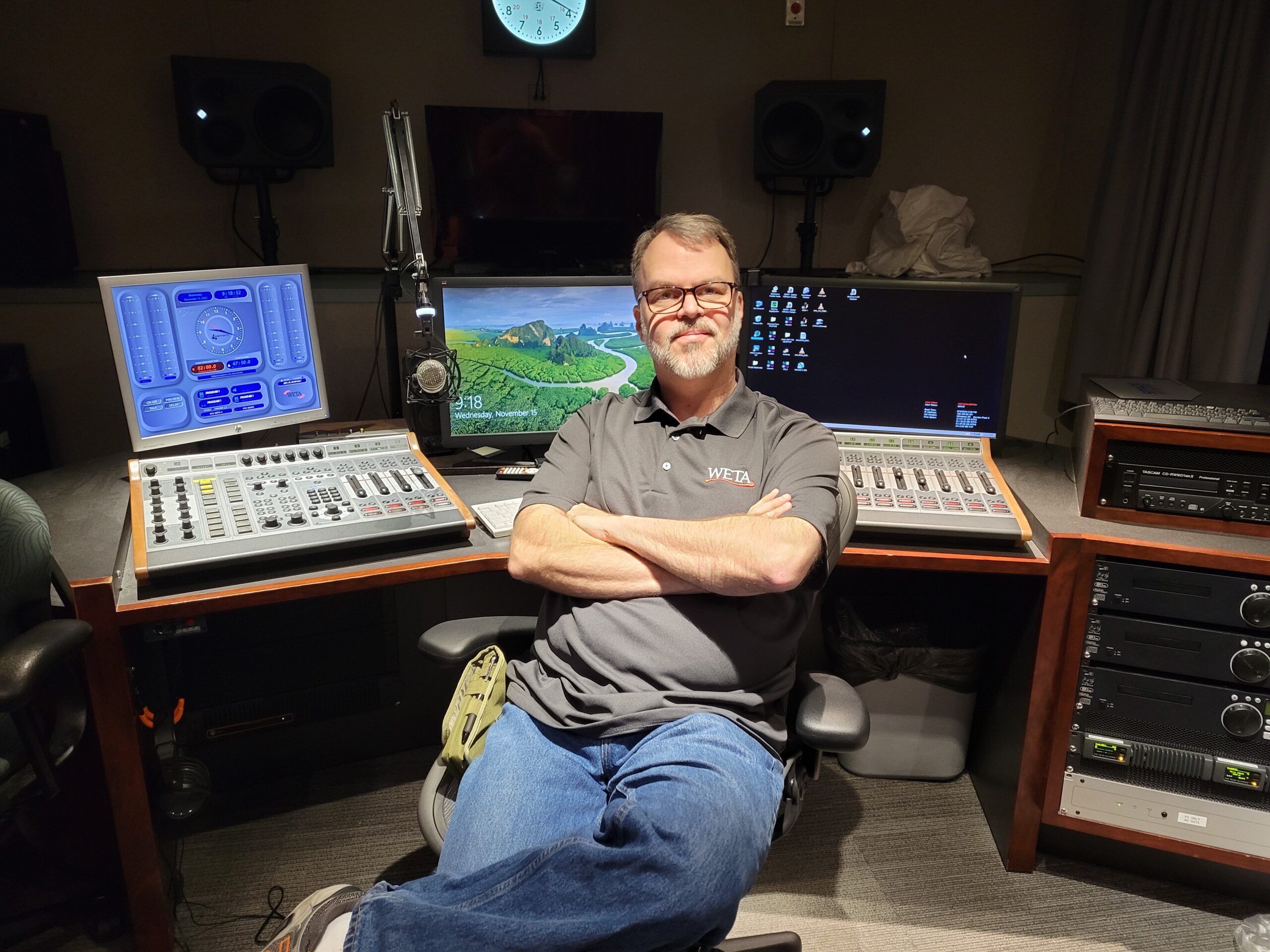
William Harrison tries to find the best choice given the circumstances of the installation.
“As much as it would simplify things, there’s no one-size-fits-all option, and there are times when one particular factor will override all others, like a lack of budget, or limited cooling, or a site that isn’t particularly accessible,” he said.
“Having said that, it’s great when you can stay with one manufacturer. Usually features, labels and even user interfaces are very similar if not identical, and sometimes you can share spares between multiple installations.”
He adds that when purchasing a transmitter, a manager needs a good overall understanding of the entire installation in order to predict total cost of ownership.
“It’s easy to calculate the initial purchase, and the electrical usage given the efficiency. But not all managers understand that how well one system performs can directly affect others. For example, I can estimate cooling costs for a given power and efficiency, but if that HVAC equipment is 10 years old, it’s probably not running at peak performance, which means it consumes more electricity and works harder, which causes more wear and tear, which necessitates more maintenance, etc.”
He adds that when talking about efficiency, it’s important to understand what the numbers really mean. “For example, going from 50% to 55% efficiency is not a 5% jump; the difference, 5, goes into 50 ten times, so it is a 10% jump, meaning your power bill is reduced by 10%.”
“My filtering system is pretty simple,” said Joe Geerling on his philosophy of choosing a manufacturer.
“You have to get past each bar to be considered. The first bar is a reputation for staying on the air. Second bar is parts and service availability. Third is communication setup — can I see a lot more than just FWD, REFL, V, I and a few status lights? This usually leaves three or four manufacturers, and then I deal with the reality of the budget. Some engineers like to have one source for all transmitters, and I can appreciate that. But I have not found it hard to have good relationships with multiple manufacturers as long as they have good service and parts.”
On the feature side, Geerling considers how each transmitter operates under stress, particularly high temperatures, which can be a problem when AC systems fail.
“The reputation of the company and the published max operating temp are big factors for me, but I also look at the heat load produced by the unit at the expected power level.” He also would look for a web browser and make sure he could manage it with SNMP, preferably Version 3.
“I would confirm parts availability and service locations. I also look for what is monitored in the software. It is no longer difficult to monitor the RF waveform and other parameters that previously required very expensive test equipment. It is a huge plus to have built into the transmitter and available in the browser a display of things like the baseband, the RF out before and after any output filter, the RBDS data stream and any other data that may help in troubleshooting.”
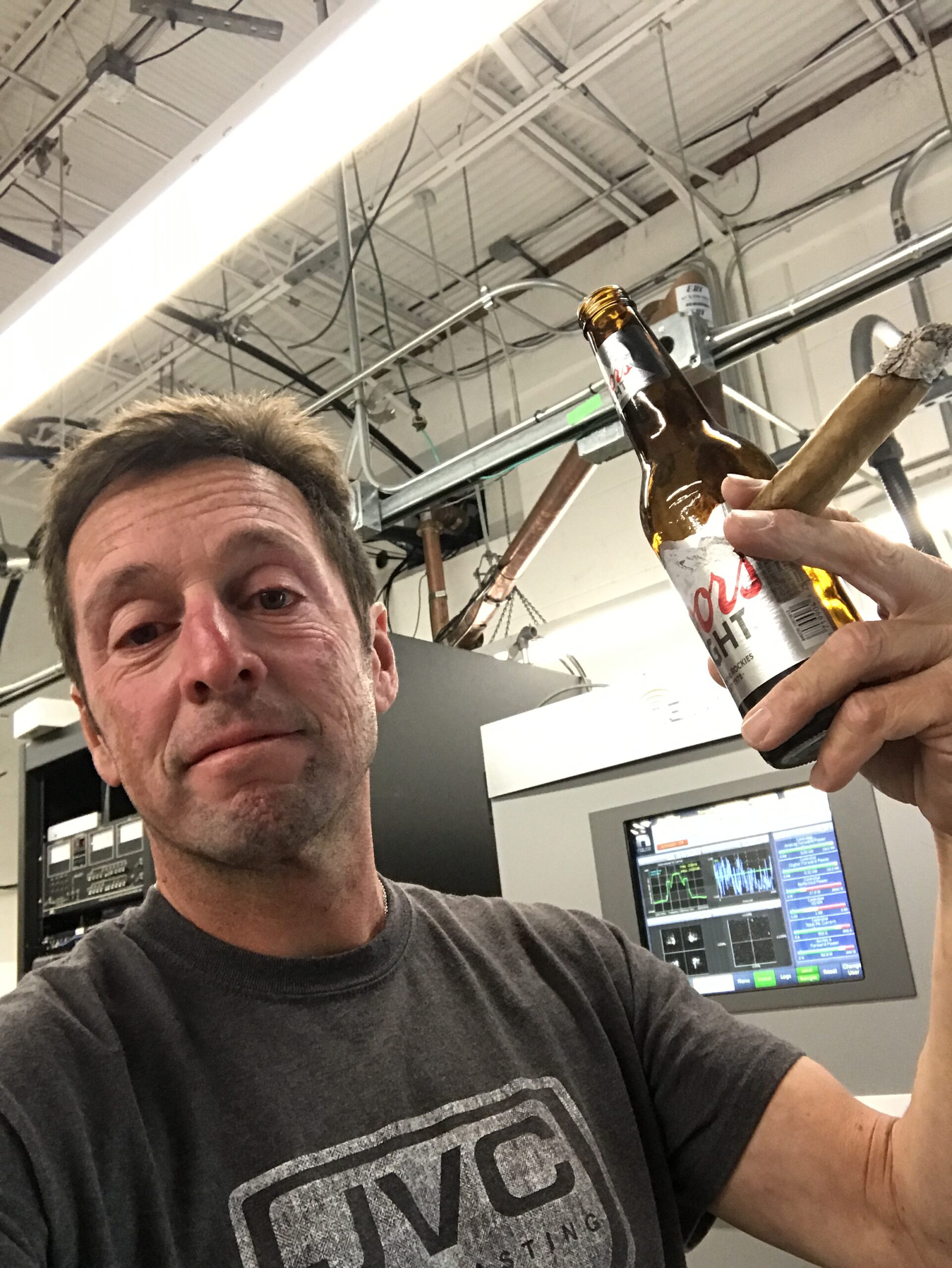
John Caracciolo — whose company just finished a new installation in its Orlando market and is planning the replacement of five high-power FM transmitters in 2024 — seeks high efficiency, high reliability and low energy consumption.
“With tower rents as high as they are and site floor space becoming limited, size is also a critical component when making a decision on a new transmitter. As an engineer/owner, price and support definitely plays a role in my choice.
“In a few of our markets we only have a contract engineer, so time at the transmitter site is limited; if a fault or failure occurs, the ability for the manufacturer or local engineer to remote in and assess the situation is crucial.”
Karl Lahm says that before you can perform a “best value” analysis, you’ll need to gather critical information including the financial constraints of your employer or client; the location of the transmitter site and the nature of its building or enclosure; the required transmitter power output range; details of the supporting infrastructure, electrical and HVAC; each manufacturer’s product information; and each product’s performance and reliability record in the field, as well as its ease of interface with upstream, downstream and ancillary equipment.
Jim Stenberg adds that a manager should be asking about the level of support and how easy it is to access that support.
“What level of training is available for new hires after the initial purchase training is completed? Can a new engineer get training three years after purchase at no or little cost?” He’ll also ask the manufacturer to provide a users list for the exact model — with names and phone numbers. “I want to talk with them.”
Alex Hartman recommends that the buyer ask critical questions about the availability of that factory support.
“Most vendors in broadcast these days only have a few folks who are in the ‘advanced’ category of support when something goes sideways, and those people are always very busy. Eventually they do have to take a day off or retire,” he said.
“Don’t trust your sales reps on their word that they have ‘world class support’ but only from 8 a.m. to 5 p.m. Eastern time Monday through Friday. That does no good if you’re deploying a rig in a remote island nation or abroad. The transmitter itself is only as good as the company behind it. Test that metric before a purchase.”
Shaun Dolan recommends that shoppers evaluate solutions from multiple manufacturers.
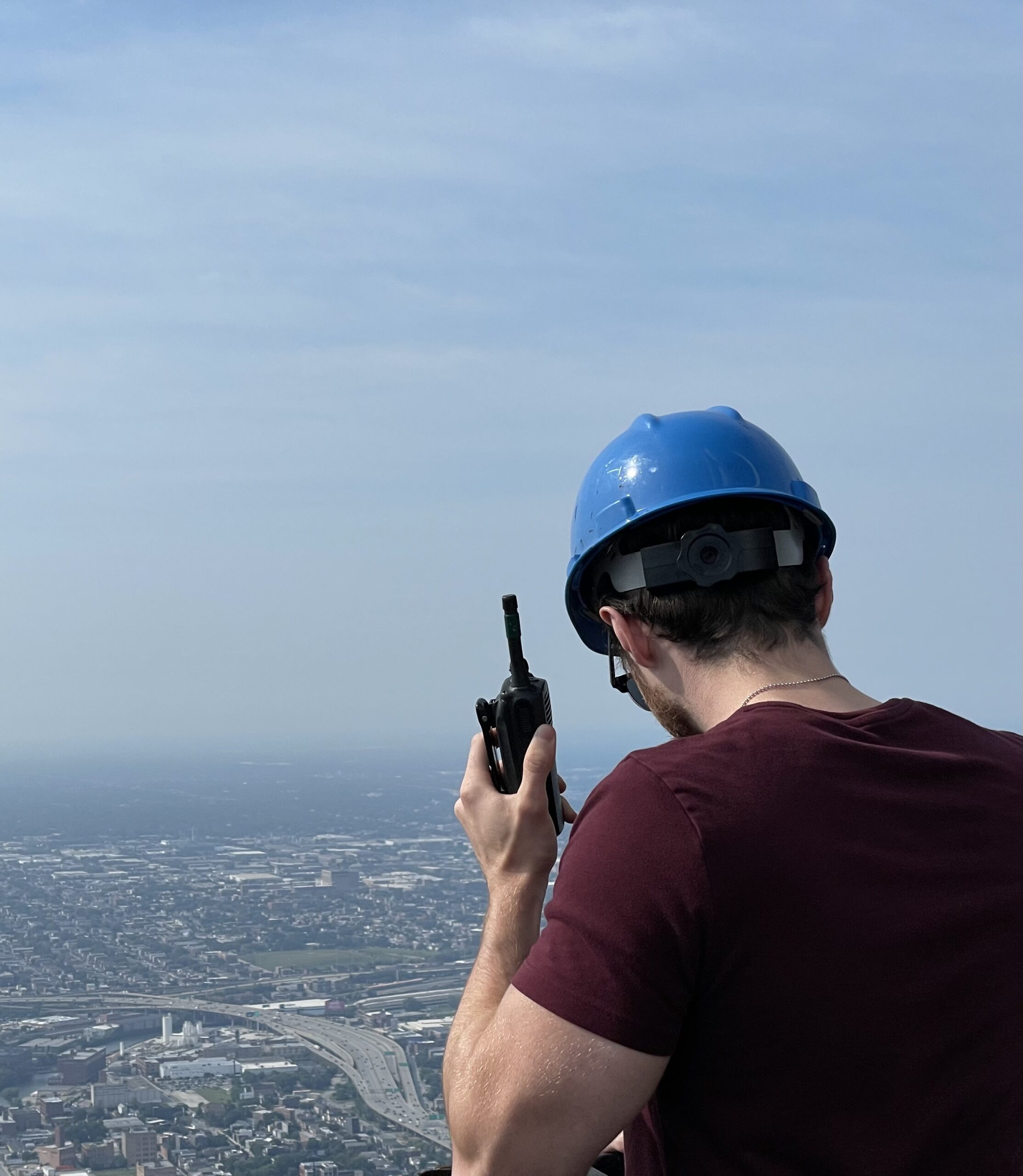
“Seek detailed insights on how the new transmitter will impact operating expenses, covering energy costs and maintenance. We like to complete a ROI analysis, considering factors like energy efficiency and repairs over time, to help clients make an informed investment decision.”
Should you then standardize your fleet? Bonneville has done so with one brand of transmitters, Jason Ornellas said.
“Having a standard was key, and the interoperability between equipment, signal flow and shared resources was a significant reason we standardized.
“Having a common knowledge and understanding within the group of a specific brand allows every one of our technology team to be able to assist or share information about it. Standardization also makes maintenance easier and streamlines the exchanging of parts throughout the company.”
And in your planning, Robert Combs says, don’t forget to ask whether a possible HD Radio migration is in the cards, now or down the road, before you buy. Keep in mind that the FCC is considering a change in the formula that determines which stations can use the highest digital injection levels, so make sure your transmitter is compatible.
On a related topic, William Harrison noted that WETA is a superpower FM station, one of about 60 grandfathered in at a higher power level than typically allowed for their class.
“Any superpower station needs to perform an analysis of allowed HD power, which is a different calculation from that for a typical station. Not only do you want to make certain your proposed transmitter can accommodate your needs for HD, but occasionally there might be an advantage to using separate analog and HD transmitters,” he said.
“There’s a power level where the cost of operating separate transmitters is less than that of operating a hybrid, and a bonus can be that, in the event of an issue with the analog transmitter, the digital transmitter can possibly be pressed into service as a lower-power analog aux or hybrid. The biggest disadvantages are the increased real estate in the shelter for two units and a combiner, or sometimes even vertical real estate using two antennas on the tower to perform space combining.”
Benefit of experience
I thought it would be interesting to ask our experts about lessons they’ve learned from past projects.
William Harrison replied: “Earlier this year I installed a new aux transmitter on top of a mountain. This was unusual, as typically I would replace the main transmitter and demote it to be the aux, but in this case the main was working fine, and the aux was having some issues, so it made more sense to just replace it,” he said.
“It was also an opportunity to ‘standardize’ the site. Before, I had two different manufacturers’ boxes at the site, with different connectors, control wiring, etc. Installing the new aux essentially meant cloning the main setup, making troubleshooting that much simpler in the future.”
Jim Stenberg did project management work at several recent installations. “What became clear is that checking on the AC power capacity and ensuring that you have reliable AC power delivery, including a standby generator, should be the first step in planning an installation,” he said.
“Will the transmitter need 480 VAC three-phase power? Does the site have that available at the pole? Many smaller sites do not. Is there sufficient ground space available for the transformer and generator pads? Have you taken into account increased loading on the HVAC capacity from a new transmitter? This can significantly affect the AC power and costs.”
Karl Lahm supervised dozens of transmitter replacements and repurposings during the TV channel repack. While those were television projects, the lessons translate.
“The keys to success were careful and thorough up-front project planning; hiring truly qualified contractors for both installation and supporting facilities work; critical review of all contractor installation plans; and close monitoring of the work and its completion.”
For Joe Geerling, “The best part of new installations for me is sitting back in the office and connecting to a transmitter and seeing deep into its systems using a web interface. I can do a quick check and get familiar with the transmitter’s readings right after the install and throughout the days and then the seasons. Seeing temps on the RF amps? Priceless!”
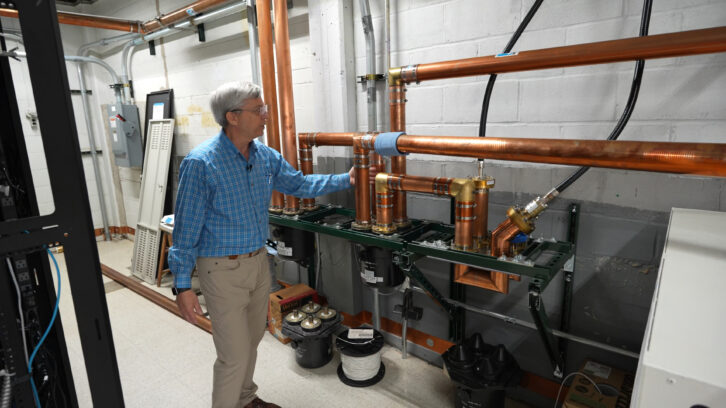
He has discovered that many sites do not have good grounding — and some have none.
“I don’t understand how that is possible, as all transmitter installation instructions discuss it. We keep learning more about lightning and protection, and the only sure thing is doing nothing is the worst answer!” So make sure you have a good grounding plan, he said.
“Not everyone can run 4-inch copper around the perimeter of a shack, then pull a piece to a new 1 kW transmitter. But look for the existing grounding setup and make a plan to connect to it. I defer to Jeff Welton for those who might want advice when there is only the AC box with a ground rod to be found. I have not seen a tower that was without ground rods but I have seen several where they are not easily found.”
Miscellany
The topic of our ebook proved a rich one, and I found it hard to condense all the good information I gathered into this story. But here’s a sampling of how our engineers answered several further questions.
On planning a remote control system, Karl Lahm said that as transmitters’ internal control systems have evolved from dedicated logic to programmed microcontrollers and site/station LANs have evolved to segmented DMZ configurations, the benefits of hard-wired, analog/parallel remote control interfacing don’t outweigh the time required to implement them.
“The transmitter and remote control system should have SNMP compatibility,” Lahm continued. “The remote control system should be capable of interfacing with supporting facilities equipment that uses interfaces architectures such as MODBUS, when SNMP isn’t available.
“Furthermore, the remote control system can and should be configured to essentially back up critical transmitter internal detection/control features such as reflected power control. And remote control systems should be interfaced to RF switches either via the transmitter’s internal controls or in a compatible manner that avoids conflicts between transmitter and remote control causing chaos in the RF signal path.”
On the concept of creating redundancy, Shaun Dolan said you should take a strategic approach.
“Engineers should initiate a thorough discussion about opportunity costs with key stakeholders, engaging the station manager or finance team to align technical decisions with the goals of the business. Simultaneously, a careful assessment of the impact of off-air time on the business is essential, considering factors such as revenue generation and the nature of services provided, whether commercial or community-oriented,” he said.
“In smaller markets, a nuanced financial analysis becomes crucial, weighing the cost-effectiveness of brief downtime against the investment required for a fully redundant transmission plant. This evaluation ensures that redundancy plans are not only technically robust but also economically sound. Ultimately, the level of redundancy should be tailored to the specific goals of the business, with considerations for both financial feasibility and service to the community, ensuring a practical approach to transmitter plant resilience.”
What about cyber safety considerations?
“Engineers should adopt security measures akin to protecting any critical system,” Dolan said.
“A common attack vector we encounter when entering a new facility is reliance on port forwarding for remote access. We find this is a great opportunity to explain the risk and introduce inter-site networking solutions such as site-to-site VPNs or an SD-WAN overlay, with which we can address security concerns without complicating access for engineers. Our approach ensures that security measures enhance accessibility for engineers rather than creating additional challenges, emphasizing workflows that respect the unique needs of broadcasters.”
I also asked: What should be included in a transmitter manufacturer’s on-site commissioning package?
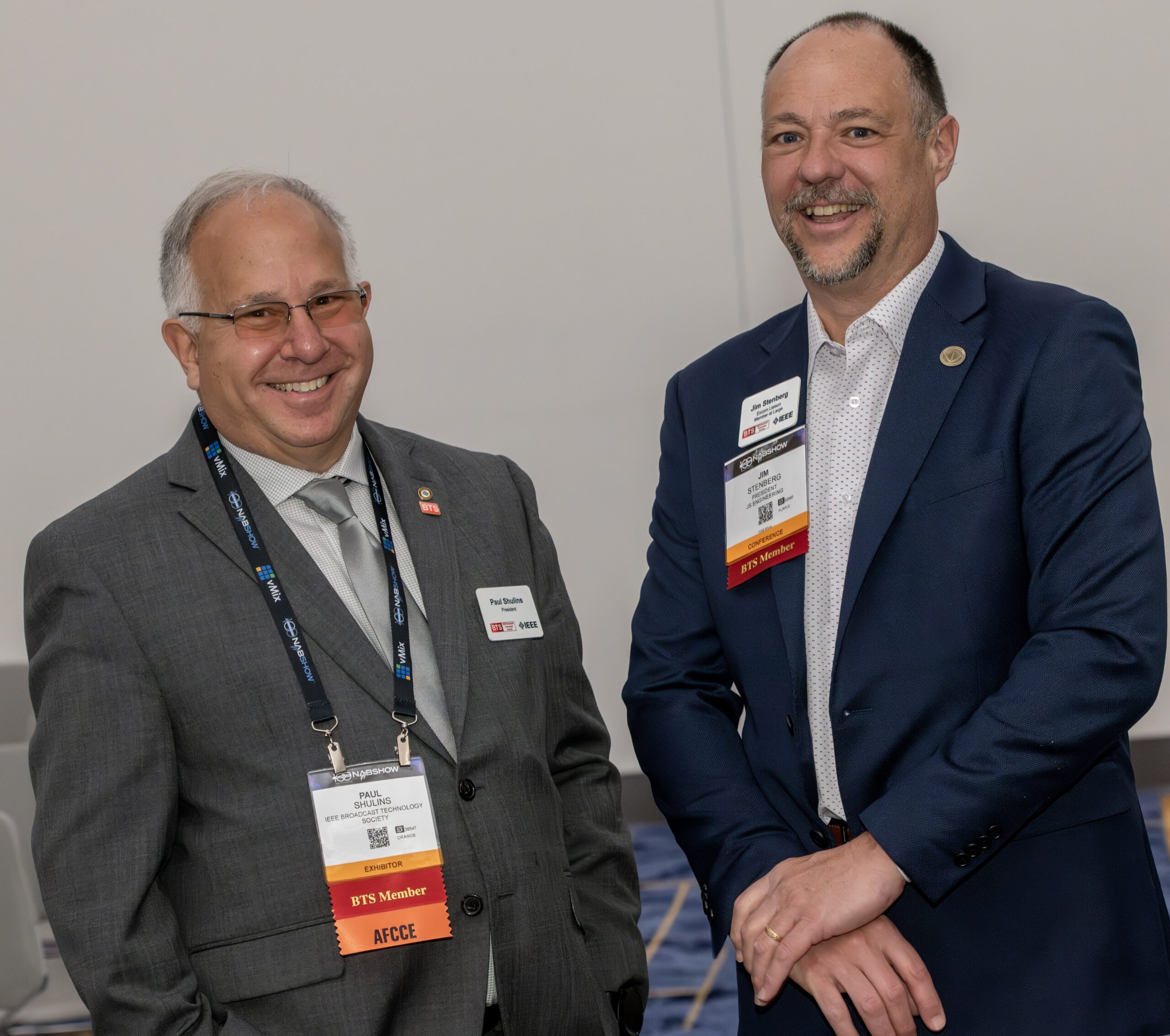
“It would be great to insist on a final total plant efficiency measurement that includes measuring the AC power delivered to various components and systems,” said Jim Stenberg, “then adding them together to calculate RF OUT kW/AC IN kW. This should be the standard by which you compare any two transmitters.
“For many it is, but not all manufacturers look at it this way,” he said.
“I would also suggest that you have an infrared heat scan of your systems inside and outside to ensure there are no hot spots where there shouldn’t be.” This would include AC power panels, connections, transformers; cooling systems; transmitter internals; filters, lines and antennas.
And are there misconceptions that should be cleared up?
“Many engineers believe that VSWR foldback will protect a transmission line and antenna system from damage,” said Paul Shulins.
“This is not the case. It’s true that VSWR foldback is great for icing conditions, but what it really does is reduce the reflected power to an ‘acceptable level.’ It does not measure VSWR, and that is the key, a system that is badly needed on any high-power system that will remove RF when the calculated VSWR exceeds a preset threshold.”
VSWR foldback merely reduces the forward power, he said, and the reduced power can run into a degraded load for days or weeks, leading to line or antenna damage.
“Folks need to realize that external VSWR protection is needed that actually calculates VSWR. The misconception is that engineers may rely on foldback when they should really have some form of external VSWR protection. It would be great for manufacturers to build in more sophisticated protection right into their transmitters.”
Last, Alex Hartman pointed out that tube manufacturers haven’t made a reliable tube for broadcast in a long time.
“If you are still using a tube transmitter, plan to replace it sooner rather than later. The chances of you getting a working tube, let alone an engineer who knows how to deal with tubes in general, is getting smaller by the day. There’s nothing to be done about it. We’ve exhausted the metals required to keep them going and have moved on to less reliable alternatives. Time to retire the tubes, unfortunately.”
Looking ahead
So what’s next — how might transmitter designs evolve in the next few years?
John Caracciolo cites a very practical benefit of the migration to software and integrated functionality that we discussed earlier.
“More models will have built in features like processors, RDS, stereo generators and bidirectional AoIP capability. I think this will lead to an overall price reduction of a new transmission plant buildout.”
Paul Shulins believes transmitters will continue to improve in efficiency, get smaller for a given power level and offer improved cooling. “I think liquid-cooling systems will become more popular, and will be easier to install and maintain.”
Joe Geerling thinks engineers will become far more interested in the operating system being used by the manufacturer. “Not only because of security, but as the modulation becomes more and more digital, we will be more interested in the total horsepower of the system and how upgradable it may be,” he said.
“I could see AI helping make decisions that are impractical in current designs to help efficiency in both RF and all the information in the carrier. We seem to have made a large change to smaller sizes, and I am guessing it will take more than five years for the next substantial reduction in size.”
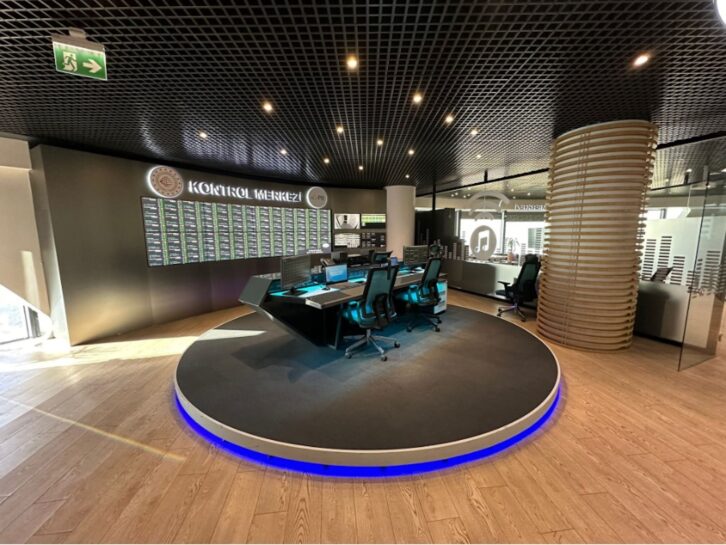
William Harrison expects manufacturers will “continue to refine the SDT, the Software-Defined Transmitter. We’re already on that road with ancillary devices, where the same box with a different software load can take on a whole new role such as an exciter, importer or exporter. An exciter can go from ATSC 1.0 to 3.0 or 5G broadcast; and we’ve seen it in licensed features you can add to a box, such as increased power levels or crest factor reduction. Imagine buying a transmitter, and deciding on the fly what you will use it for. We’re definitely not there yet, but I do believe it is coming.”
Karl Lahm said the architectures of FM and TV transmitters have trended toward similarity for many years, and he expects this to continue. “Medium-wave (AM) band transmitters are likely to join them when designed for pure digital DRM or MA3 operation. Incremental improvements in efficiency and physical size can be expected as semiconductors evolve.”
But Alex Hartman doesn’t think transmitters will change much at their basic level.
“There’s some interesting developments going on at the device level from companies like NXP, but they’re a ways off from becoming a thing in the broadcast industry,” he said.
“Many of them aren’t out of experimental labs yet. I think the broadcast manufacturers are still trying to find their next step. The industry moves very slowly, even after a decision has been made.
“Of course, a lot of these things require leaps and bounds of breakthroughs in physics to have any measurable impact on the end users. Think solid-state transmitters reaching, and sometimes surpassing, tube efficiency.”
Hartman thinks it will be a while before another moment like that comes along.
“It was the cellular industry that drove that technology, not broadcast. If you want to peek behind the curtain, look into what they’re doing with cellular data radios for what could be coming to broadcast equipment.”
Read more about trends in transmission in the free Radio World ebook.
